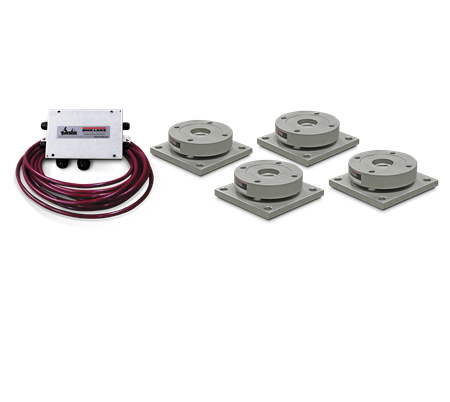Is the website displaying in the correct language? Please confirm or select a different language.
Your region has been set automatically. Please confirm or select a different region.
The Science of Silos
SYCSA’s impressive R&D center has a complete small-scale plant to test materials and develop customized flow technology, including bins, hoppers with sensors to detect wall force, conveyance systems, valves, air pressure and vacuum technology, filling, mixing and batching equipment, and silos mounted on Rice Lake RL9000 load cells. It is probably the first and only development center of this caliber in Latin America.
Simply put, a silo is a structure for storing bulk material. Silo systems, though, can be anything but simple. The complicated part is to move the material stored in the silo in a smooth and controlled flow.
Silos y Camioness (SYCSA), Pachuca, Mexico, has been building silos for 44 years. They began by fabricating small silos for transporting cement by truck and tower silos for storing cement and additives for batching plants. In time, the need for transporting and storing larger quantities of cement grew. Customers also needed silos equipped with electronic weighing systems, digital displays and printers to keep a more accurate inventory weight. In addition, SYCSA was finding new customers with different materials, including dry chemicals to add color to plastics, foods such as flour, corn, and sugar, and recycled materials such as shredded plastic and crushed glass.
As processes changed and customers began to demand greater ease of operation, SYCSA’s expertise evolved to more sophisticated material handling, such as dosing in small quantities and formulating and processing material particles of different sizes, shapes and characteristics that tend to segregate or stick together.
In 1993, automation brought new tools and skills, and SYCSA began designing and manufacturing complete silo systems, including components, piping, valves, air pressure and vacuum technology to move materials from silos, bins and hoppers through the entire batching and processing sequence. SYCSA’s experience grew as they worked with each type of material, culminating in a research and development center where the work team of SYCSA’s bulk material laboratory believes all flow problems can be solved through improvements in design. The laboratory manager observes, “It is very expensive to correct flow problems at the side. At the reach and development center, we can attack the problem much more cheaply.”
SYCSA uses its laboratory and teaching center to design, build, and test automated equipment, as well as study specific material and flow characteristics. SYCSA customers and end users also attend training seminars to learn how their specific material can be handled.
Some of SYCSA’s technology is designed expressly for the plastics industry. Mills transport scrap plastic to storage silos and then to pelletizing machines to be returned to production. The flow of the material is very difficult to control and maintain inside the silo and pneumatic conveyance systems because it self-organizes into “frames.” The SYCSA development center resolves these and other unique challenges that arise along the way, ensuring that each silo system provides the best solutions for material storage and handling.
Subscribe to Rice Lake Magazine
Sign in or create a Rice Lake website account to request a Rice Lake Magazine filled with application stories like this one be sent to you.
Account Sign In Create an Account


 My Account
My Account








